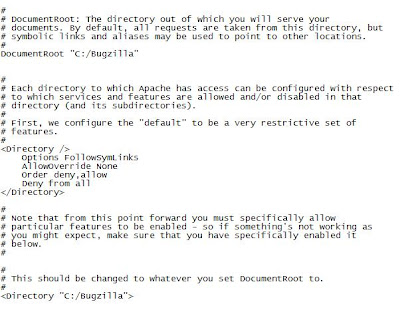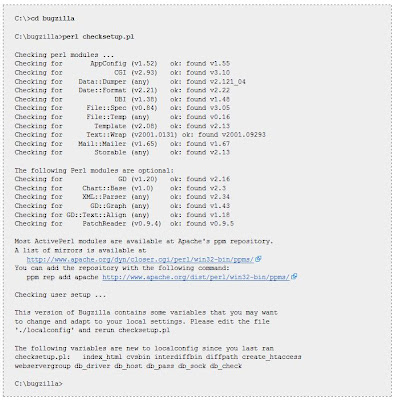SEVERE: Context [] startup failed due to previous errors
20-May-2010 14:25:10 org.apache.catalina.loader.WebappClassLoader loadClass
INFO: Illegal access: this web application instance has been stopped already. Could not load org.apache.log4j.spi.LocationInfo. The eventual following stack trace is caused by an error thrown for debugging purposes as well as to attempt to terminate the thread which caused the illegal access, and has no functional impact.
java.lang.IllegalStateException
at org.apache.catalina.loader.WebappClassLoader.loadClass(WebappClassLoader.java:1273)
at org.apache.catalina.loader.WebappClassLoader.loadClass(WebappClassLoader.java:1233)
at java.lang.ClassLoader.loadClassInternal(ClassLoader.java:319)
at org.apache.log4j.spi.LoggingEvent.getLocationInformation(LoggingEvent.java:247)
at org.apache.log4j.helpers.PatternParser$LocationPatternConverter.convert(PatternParser.java:483)
at org.apache.log4j.helpers.PatternConverter.format(PatternConverter.java:65)
at org.apache.log4j.PatternLayout.format(PatternLayout.java:502)
at org.apache.log4j.WriterAppender.subAppend(WriterAppender.java:302)
at org.apache.log4j.WriterAppender.append(WriterAppender.java:160)
at org.apache.log4j.AppenderSkeleton.doAppend(AppenderSkeleton.java:251)
at org.apache.log4j.helpers.AppenderAttachableImpl.appendLoopOnAppenders
(AppenderAttachableImpl.java:66)
at org.apache.log4j.Category.callAppenders(Category.java:206)
at org.apache.log4j.Category.forcedLog(Category.java:391)
at org.apache.log4j.Category.log(Category.java:856)
at com.liferay.portal.log.Log4jLogImpl.info(Log4jLogImpl.java:80)
at com.liferay.portal.kernel.log.LogWrapper.info(LogWrapper.java:124)
at com.liferay.portal.kernel.deploy.hot.HotDeployEvent.initDependentServletContextNames
(HotDeployEvent.java:108)
at com.liferay.portal.kernel.deploy.hot.HotDeployEvent.(HotDeployEvent.java:57)
at com.liferay.portal.kernel.servlet.HookContextListener.contextInitialized(HookContextListener.java:47)
at org.apache.catalina.core.StandardContext.listenerStart(StandardContext.java:3843)
at org.apache.catalina.core.StandardContext.start(StandardContext.java:4342)
at org.apache.catalina.core.ContainerBase.addChildInternal(ContainerBase.java:791)
at org.apache.catalina.core.ContainerBase.addChild(ContainerBase.java:771)
at org.apache.catalina.core.StandardHost.addChild(StandardHost.java:525)
at org.apache.catalina.startup.HostConfig.deployDirectory(HostConfig.java:926)
at org.apache.catalina.startup.HostConfig.deployDirectories(HostConfig.java:889)
at org.apache.catalina.startup.HostConfig.deployApps(HostConfig.java:492)
at org.apache.catalina.startup.HostConfig.start(HostConfig.java:1149)
at org.apache.catalina.startup.HostConfig.lifecycleEvent(HostConfig.java:311)
at org.apache.catalina.util.LifecycleSupport.fireLifecycleEvent(LifecycleSupport.java:117)
at org.apache.catalina.core.ContainerBase.start(ContainerBase.java:1053)
at org.apache.catalina.core.StandardHost.start(StandardHost.java:719)
at org.apache.catalina.core.ContainerBase.start(ContainerBase.java:1045)
at org.apache.catalina.core.StandardEngine.start(StandardEngine.java:443)
at org.apache.catalina.core.StandardService.start(StandardService.java:516)
at org.apache.catalina.core.StandardServer.start(StandardServer.java:710)
at org.apache.catalina.startup.Catalina.start(Catalina.java:578)
20-May-2010 14:25:10 org.apache.catalina.loader.WebappClassLoader loadClass
INFO: Illegal access: this web application instance has been stopped already. Could not load org.apache.log4j.spi.LocationInfo. The eventual following stack trace is caused by an error thrown for debugging purposes as well as to attempt to terminate the thread which caused the illegal access, and has no functional impact.
java.lang.IllegalStateException
at org.apache.catalina.loader.WebappClassLoader.loadClass(WebappClassLoader.java:1273)
at org.apache.catalina.loader.WebappClassLoader.loadClass(WebappClassLoader.java:1233)
at java.lang.ClassLoader.loadClassInternal(ClassLoader.java:319)
at org.apache.log4j.spi.LoggingEvent.getLocationInformation(LoggingEvent.java:247)
at org.apache.log4j.helpers.PatternParser$LocationPatternConverter.convert(PatternParser.java:483)
at org.apache.log4j.helpers.PatternConverter.format(PatternConverter.java:65)
at org.apache.log4j.PatternLayout.format(PatternLayout.java:502)
at org.apache.log4j.WriterAppender.subAppend(WriterAppender.java:302)
at org.apache.log4j.WriterAppender.append(WriterAppender.java:160)
at org.apache.log4j.AppenderSkeleton.doAppend(AppenderSkeleton.java:251)
at org.apache.log4j.helpers.AppenderAttachableImpl.appendLoopOnAppenders
(AppenderAttachableImpl.java:66)
at org.apache.log4j.Category.callAppenders(Category.java:206)
at org.apache.log4j.Category.forcedLog(Category.java:391)
at org.apache.log4j.Category.log(Category.java:856)
at com.liferay.portal.log.Log4jLogImpl.info(Log4jLogImpl.java:80)
at com.liferay.portal.kernel.log.LogWrapper.info(LogWrapper.java:124)
at com.liferay.portal.kernel.deploy.hot.HotDeployEvent.initDependentServletContextNames
(HotDeployEvent.java:108)
at com.liferay.portal.kernel.deploy.hot.HotDeployEvent.
at com.liferay.portal.kernel.servlet.HookContextListener.contextInitialized(HookContextListener.java:47)
at org.apache.catalina.core.StandardContext.listenerStart(StandardContext.java:3843)
at org.apache.catalina.core.StandardContext.start(StandardContext.java:4342)
at org.apache.catalina.core.ContainerBase.addChildInternal(ContainerBase.java:791)
at org.apache.catalina.core.ContainerBase.addChild(ContainerBase.java:771)
at org.apache.catalina.core.StandardHost.addChild(StandardHost.java:525)
at org.apache.catalina.startup.HostConfig.deployDirectory(HostConfig.java:926)
at org.apache.catalina.startup.HostConfig.deployDirectories(HostConfig.java:889)
at org.apache.catalina.startup.HostConfig.deployApps(HostConfig.java:492)
at org.apache.catalina.startup.HostConfig.start(HostConfig.java:1149)
at org.apache.catalina.startup.HostConfig.lifecycleEvent(HostConfig.java:311)
at org.apache.catalina.util.LifecycleSupport.fireLifecycleEvent(LifecycleSupport.java:117)
at org.apache.catalina.core.ContainerBase.start(ContainerBase.java:1053)
at org.apache.catalina.core.StandardHost.start(StandardHost.java:719)
at org.apache.catalina.core.ContainerBase.start(ContainerBase.java:1045)
at org.apache.catalina.core.StandardEngine.start(StandardEngine.java:443)
at org.apache.catalina.core.StandardService.start(StandardService.java:516)
at org.apache.catalina.core.StandardServer.start(StandardServer.java:710)
at org.apache.catalina.startup.Catalina.start(Catalina.java:578)
But at the end I was able to run it with out any problem after removing the following from the from the bin/setenv.bat.
if not "%JAVA_HOME%" == "" (Although it is working well now, I'm wondering why this has happened suddenly...................!
set JAVA_HOME=
)



























